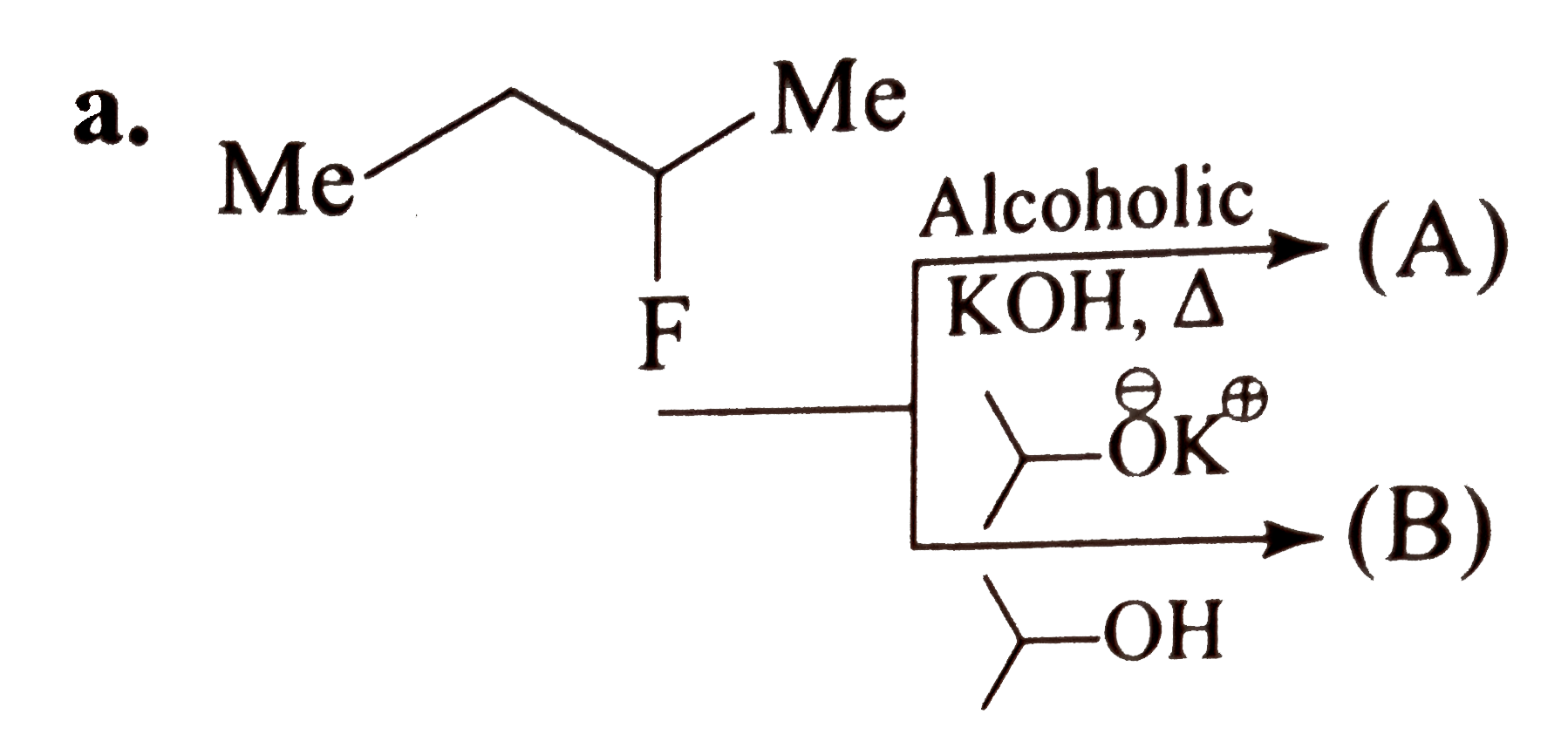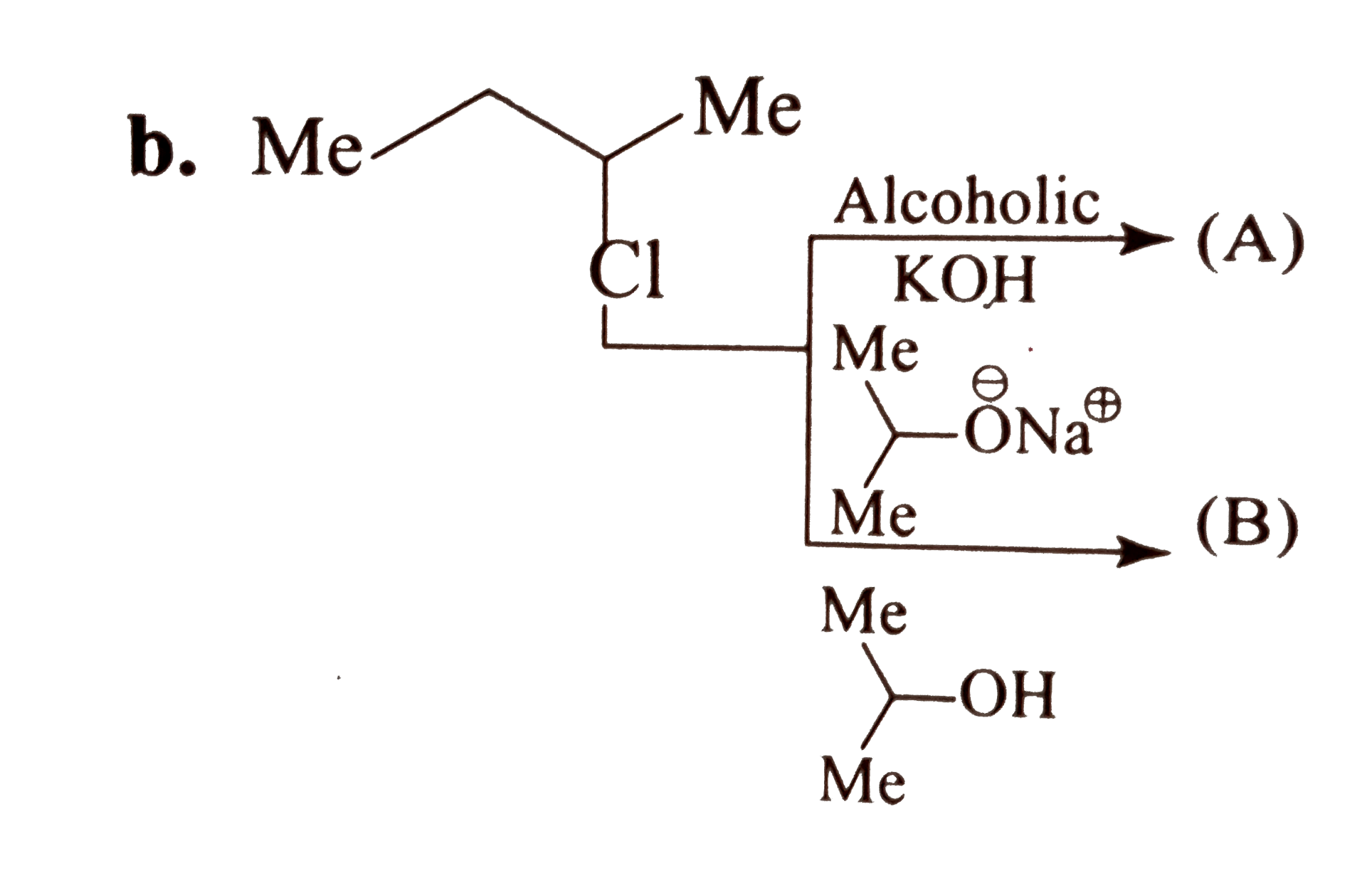In the presence of concentrated OH−, aldehydes lacking an α-hydrogen undergo the Cannizzaro reaction. Give the products of the reactions of (a) benzaldehyde (b) trimethylacetaldehyde and ( c ) furaldehyde.
To solve the problem, we will analyze the Cannizzaro reaction for each of the given aldehydes: benzaldehyde, trimethylacetaldehyde, and furaldehyde.
Step 1: Understanding the Cannizzaro Reaction
- The Cannizzaro reaction occurs when aldehydes that lack alpha-hydrogens react in the presence of a strong base (like concentrated OH^-).
- In this reaction, one molecule of aldehyde is oxidized to a carboxylic acid, while another molecule is reduced to an alcohol.
Step 2: Analyzing Benzaldehyde (C6H5CHO)
- Benzaldehyde does not have any alpha-hydrogens.
- When benzaldehyde undergoes the Cannizzaro reaction, it produces:
- Benzyl Alcohol (C6H5CH2OH): This is the reduced product.
- Benzoic Acid (C6H5COOH): This is the oxidized product.
Step 3: Analyzing Trimethylacetaldehyde (C(CH3)3CHO)
- Trimethylacetaldehyde also lacks alpha-hydrogens.
- Upon undergoing the Cannizzaro reaction, it yields:
- 2,2-Dimethylpropan-1-ol (C(CH3)3CH2OH): This is the reduced product.
- 2,2-Dimethylpropanoic Acid (C(CH3)3COOH): This is the oxidized product.
Step 4: Analyzing Furaldehyde (C4H3OCHO)
- Furaldehyde does not have any alpha-hydrogens.
- In the Cannizzaro reaction, it produces:
- Furfuryl Alcohol (C4H3OCH2OH): This is the reduced product.
- Furanoic Acid (C4H3OCOOH): This is the oxidized product.
Summary of Products:
- (a) Benzaldehyde → Benzyl Alcohol + Benzoic Acid
- (b) Trimethylacetaldehyde → 2,2-Dimethylpropan-1-ol + 2,2-Dimethylpropanoic Acid
- (c) Furaldehyde → Furfuryl Alcohol + Furanoic Acid
- The Cannizzaro reaction occurs when aldehydes that lack alpha-hydrogens react in the presence of a strong base (like concentrated OH^-).
- In this reaction, one molecule of aldehyde is oxidized to a carboxylic acid, while another molecule is reduced to an alcohol.
- Benzaldehyde does not have any alpha-hydrogens.
- When benzaldehyde undergoes the Cannizzaro reaction, it produces:
- Benzyl Alcohol (C6H5CH2OH): This is the reduced product.
- Benzoic Acid (C6H5COOH): This is the oxidized product.
Step 3: Analyzing Trimethylacetaldehyde (C(CH3)3CHO)
- Trimethylacetaldehyde also lacks alpha-hydrogens.
- Upon undergoing the Cannizzaro reaction, it yields:
- 2,2-Dimethylpropan-1-ol (C(CH3)3CH2OH): This is the reduced product.
- 2,2-Dimethylpropanoic Acid (C(CH3)3COOH): This is the oxidized product.
- Furaldehyde does not have any alpha-hydrogens.
- In the Cannizzaro reaction, it produces:
- Furfuryl Alcohol (C4H3OCH2OH): This is the reduced product.
- Furanoic Acid (C4H3OCOOH): This is the oxidized product.
- (a) Benzaldehyde → Benzyl Alcohol + Benzoic Acid
- (b) Trimethylacetaldehyde → 2,2-Dimethylpropan-1-ol + 2,2-Dimethylpropanoic Acid
- (c) Furaldehyde → Furfuryl Alcohol + Furanoic Acid
Similar Questions
Give the products of the reactions given below.
b.
c.
d.
e.
View SolutionWhat type of aldehydes undergo Cannizzaro's reaction?
View SolutionWhat type of aldehydes undergo Cannizzaro's reaction?
View SolutionWhat type of aldehydes undergo Cannizzaro's reaction?
View SolutionFormaldehyde undergoes Cannizzaro's reaction since it has one alpha hydrogen atom.
View SolutionFormaldehyde undergoes Cannizzaro's reaction since it has one alpha hydrogen atom.
View SolutionHow will you account for the following:
Formaldehyde gives Cannizzaro's reaction but acetaldehyde does not.
View SolutionGive the majore and minor products of the following reactions.
a.
b.
View Solution
Give the products (B) and (C) in the above reaction.
View SolutionName the reagent by which most aldehydes can be made to undergo Cannizzaro's type reaction. Give the relevant equation also.
View Solution
